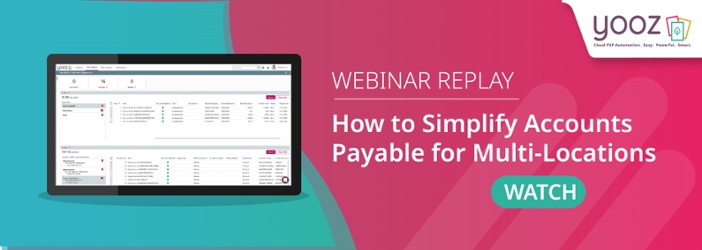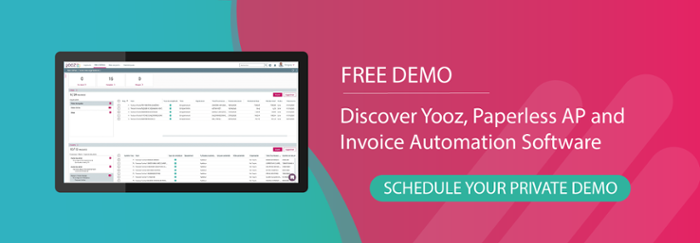Call it a balancing act. Every business is about managing inputs and outputs with the goal of providing goods and services to their customers’ satisfaction. However, at the same time, they want to do it without delays and defects, cost overruns, supply chain or labor issues, or even drawn-out arguments over what corrections and improvements should be made after a delivery. Striking the right balance between all those factors determines productivity, profit and, at the end of the day, the survival of a business.
The construction industry is no exception. Yet it is a traditional sector that deals not with virtual digital bits but with physical atoms: bricks, mortar, concrete and steel, handled by human hands and heavy machinery. The introduction of modern technology and digital tools to hit all those goals on the road to better operational efficiency is often lagging compared to other industries. This is true even in areas such as construction, where operational efficiency is key.
What Exactly is Operational Efficiency?
If operational efficiency in general is the ability to deliver products or services in a cost-effective, customer-satisfying manner without sacrificing quality, operational efficiency in construction is about finding the optimal way to handle the key inputs of a construction business in terms of time and money, including everything from raw materials and supplies to labor costs. Improving the ratio between inputs and outputs over a set period of time sets an organization on the path to better cost control and a healthy bottom line, plus creates an opportunity to manage sustainable growth.
Construction is as old as humanity, and larger trends such as ongoing urbanization will keep construction companies busy for decades to come. By some estimates, more than two-thirds of the global population that now exceeds eight billion will live in cities by the year 2050, or roughly within one generation. Population movements, newly emerging economies and adaptation to climate change will also drive new construction in many locations.
Responding to those demands, the construction industry is constantly adapting to multiple external factors. For example, think of supply chain challenges when materials such as lumber or steel become harder to find and fluctuate in price. Labor shortages and logistics hiccups are another set of challenges, as are changing building codes, rules, and regulations that can affect sourcing and building techniques down to the timeline of a job and the consecutive projects tied to it.
Being a master at operational efficiency, then, means getting things right along the entire value chain, from bidding and building to billing. The goal is to:
-
reduce unnecessary wait and idle times for all parties involved,
-
excel at streamlined planning and execution,
-
cut down on waste due to imprecise planning and implementation on site
-
avoid mistakes that could result in pricey fixes and rework.
Operational Efficiency Helps Adapt to Change
Managing operational efficiency in construction is not a one-time thing. Adapting to a fast-paced world requires construction companies to constantly tweak their formula for operational efficiency or risk losing both money and their competitive advantages to more agile businesses. It’s a challenge which comes on top of the many daily headaches that are already a fact of life for construction companies.
Headaches such as managing complex projects across multiple sites, which means keeping track of resources coming in from different vendors, planning for machinery or equipment that is owned (or rented) and needs to be deployed across building sites, fleets of trucks going in different directions, plus scheduling in-house crews and subcontractors. All this to deliver agreed-upon services on time and on budget.
This means that keeping the books current, ideally on a daily basis, helps the finance team get a better handle on cash flow and make sure bills for material and labor are paid by their due dates. To do this means that invoices can't sit around but rather must be captured and processed as quickly as possible to avoid delays, supplier inquiries, or even late fees.
On the upside, staying on top of accounts payables around a construction project translates into the opportunity to create goodwill among suppliers by paying them on time, every time and possibly lock in early-pay discounts or favorable contract terms.
Why is Everything so Hard?
Operational efficiency is particularly difficult to achieve when the people in charge of one or multiple projects are on the road, checking in on building sites, and/or doing their work remotely from their truck or a temporary office in a trailer. Not being in the head office can lead to a break in communications between workers and cause a backlog of invoices that could have been processed right then and there, sometimes with a cascading effect on other parts of the project.
Digital technologies, on the other hand, will enable a construction company to address those headaches quickly and reliably. The result is increased operational efficiency across the board because of more and better data for building to specs and for running valuable analytics, as well as a direct effect on the bottom line thanks to reaping significant savings in terms of time and money.
Operational Efficiency Avoids Defects and Unnecessary Demolition
Quality control is an especially important part of operational efficiency which can directly influence a company’s profit margin. All too often, incorrect measurements are discovered too late and will force companies to demolish, rebuild or rework certain parts of a project. Not only does that approach run up costs, it also risks triggering contractual fines and delays at other parts of the construction site.
The solution? A growing number of companies in the industry have therefore started to invest in software that helps them stay in the know. For more complex sites, they use building information modeling systems (BIMS) and digital twins, which create a virtual replica of an entire project with all its parts and timelines so all parties involved can see deliverables, ongoing progress, and address any potential conflicts and open questions in one central location. A costly clash of pipes, columns, and wires should be a thing of the past.
Overall, it’s a proven way to discover and avoid expensive misunderstandings before they happen on the ground. The alternative of shuffling plans and papers is far riskier. Not being on top of what work is done to plan can hold up and frustrate other contractors and suppliers as well as the end customer who is impatiently waiting for a building to go up.
Digital Workflows Keep Everyone in Sync
A cloud-based solution or an integrated suite of cloud-based solutions will be able to handle the entire project - or projects - workflow, from planning and ordering to the accounts payable process from purchase to payment. Going digital is a useful option to ensure that everything runs on schedule: jobs are scheduled based on timely information, machinery is dispatched in sync with work crews, and suppliers and subcontractors are happy because every invoice is captured at the source, processed, queued for approval, and scheduled for payment with a low chance of getting lost or unnecessarily delayed.
If they are digitally enabled, managers responsible for a single or multiple construction projects suddenly have the ability to do business on the road. Right from any mobile device (such as a tablet or smartphone), they can get access to all the documents they need to make an informed decision.
A digital platform lets you call up any plan, details, purchase order or invoice, drill down into the related documents that reside in the cloud and route what’s important to a coworker if they need clarification or approval. What’s more, suppliers can also tape into the single source of information.
From Bidding to Billing: Being Efficiency Has to Cover it All
Cloud-based purchase order and invoice management also allows the industry to deal with the idiosyncrasies of the construction business such as retentions and lien waivers, all without heading back to the main office. A state-of-the-art system can be set up for a company’s individual workflow and then fine-tuned to address the most commonly used types of billing, whether it’s advance, progress or arrears billing.
Here’s another key reason why this streamlined workflow translates into dollars and cents. Cost controls play an increasingly important role as inflation has picked up and won’t abate for a while. Managing ongoing expenses and always having up-to-date information on cash flow, potential arrears, and exceptions at your fingertips ensures that construction jobs are run as cost-efficiently as possible. It pays to regularly perform cost analysis and financial forecasting to determine which projects are going to plan or might need additional attention or even remedial action.
Operational efficiency in construction results in lower costs without compromising productivity, profit, or satisfaction. In that sense, digital bits from bidding and building to billing are a way to level up and form solid foundation for continued success in the construction industry.








